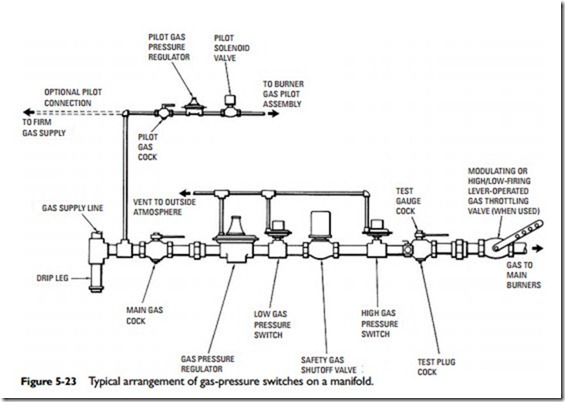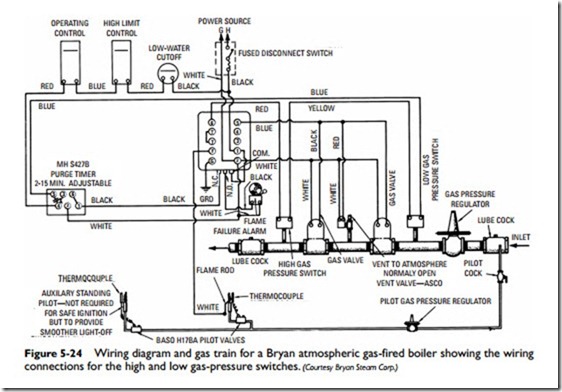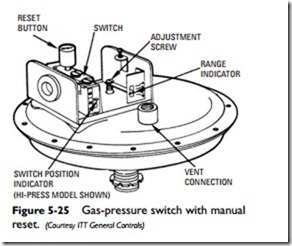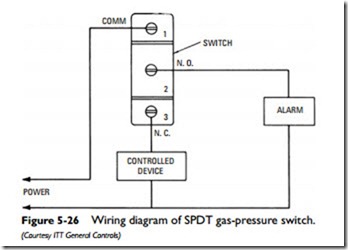Pressure Switches
A pressure switch is a safety device used in positive-pressure or differential-pressure systems to sense gas- or air-pressure changes. A typical arrangement of gas-pressure switches on a gas manifold is shown in Figure 5-23. The wiring diagram in Figure 5-24 illustrates the connections between the high and low gas-pressure switches on a gas-fired boiler manifold and the primary control.
Gas-pressure switches are available in two basic types:
• Falling-pressure switches
• Rising-pressure switches
In the falling-pressure switch, decreased pressure on the diaphragm actuates the device. The switch is designed to lock out when the pressure falls to the setpoint (minus differential). As the pressure
increases, the diaphragm rises and the switch is deactuated (except on manual reset models). An adjustable spring-loaded diaphragm determines the amount of pressure required to actuate the switch.
In a rising-pressure switch, the switch is actuated by increased pressure on the diaphragm. As the pressure falls, the diaphragm lowers and the switch is deactuated (again, except on manual reset models). An adjustable spring-loaded diaphragm determines the amount of pressure required to actuate the switch.
The pressure required to move the diaphragm in these switches is adjustable within the pressure range stamped on the switch name- plate. The pressure switch shown in Figure 5-25 can be adjusted by removing the cover and turning the adjustment screws clockwise. This action raises the actuation point of the switch. Turning the screws counterclockwise lowers the actuation point. The range scale plate in the switch is marked for four relative pressure set- tings. Setting A corresponds to a minimum range, D to a maximum range, and both B and C to intermediate ranges.
A typical wiring diagram for a single-pole double-throw SPDT switch is shown in Figure 5-26. An SPDT switch may be wired to open or close the circuit on pressure rise.
On switches equipped with manual reset (see Figure 5-25), the switch contacts open on pressure rise or pressure drop (depending on which model is used) and remain open regardless of pressure change. The reset button is pushed to close the switch after the pressure has returned to an acceptable level.



